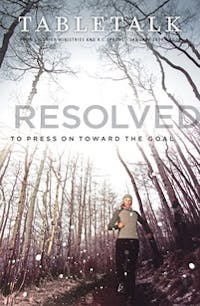
Request your free, three-month trial to Tabletalk magazine. You’ll receive the print issue monthly and gain immediate digital access to decades of archives. This trial is risk-free. No credit card required.
Try Tabletalk NowAlready receive Tabletalk magazine every month?
Verify your email address to gain unlimited access.
In the first centuries following the death and resurrection of Jesus the Messiah and the inauguration of the new covenant under which the people of God became a trans-national people crossing all borders, the church had few choices in the matter of her relationship to the surrounding culture. The options were limited due to persecution. As the church gained in numbers and influence, however, the situation began to change. With the (at least nominal) conversion of the Roman Emperor Constantine and the Edict of Milan (AD 313), the questions became acute. Now Christianity was tolerated. Would this new circumstance allow the church to transform the Roman culture, or would it open the door for the Roman culture to transform the church? Sensing trouble ahead, some believers opted for withdrawal, and these early monastics have provided a general example for many Christians ever since. Others, however, attempted to take advantage of the new opportunities and sought to transform the culture from within. Seventeen centuries later, the church continues to wrestle with how best to deal with both the opportunities and challenges presented by the various cultures in which it finds itself.
Since 1951, the starting point for discussions of the church’s relation to culture, or the Christian’s relation to culture, has been H. Richard Niebuhr’s book Christ and Culture. The five paradigms surveyed in that book (Christ Against Culture; Christ of Culture; Christ Above Culture; Christ and Culture in Paradox; and Christ the Transformer of Culture) shape the contemporary discussion in many ways. But are Niebuhr’s categories sufficient? Are they mutually exclusive ways of understanding the relationship between the church and culture? Should different approaches be taken depending on whether one lives in eighteenth-century England or twenty-first-century Saudi Arabia? What do we mean when we speak of “culture” anyway? These and many other related questions are discussed by D.A. Carson in his recent book Christ & Culture Revisited (Eerdmans, 2008). Dr. Carson is research professor of New Testament at Trinity Evangelical Divinity School in Illinois and is the author of numerous academic articles and more than forty books, including commentaries as well as works on biblical, theological, and cultural issues. In this book, he brings years of biblical reflection to bear on the subject at hand.
One of the first issues that must be settled before entering into any discussion of the church’s relation to culture is the meaning of the term culture. According to Carson, Niebuhr’s understanding of “culture” can be difficult to grasp initially because Niebuhr associates “culture” with what the New Testament speaks of as the “world,” and thus when Niebuhr speaks of culture he means something along the lines of “culture-devoid-of-Christ.” With this in mind, Carson devotes chapter one to a summary of Niebuhr’s five paradigms. Carson then turns, in chapter two, to a critique of the paradigms, where he notes immediately that he finds little to no biblical support for the “Christ of culture” paradigm. Support for the other four paradigms, however, can be found.
Carson turns to a discussion of the major turning points in redemptive history in the second half of chapter two, arguing that these turning points must be taken into account in this discussion. We must, for example, take into account the fact of creation and the fall. We must take into account the distinctive nature of Israel under the old covenant. We must take into account the coming of Christ and the inauguration of the new covenant.
In chapter three, Carson reflects in greater detail on the precise meaning of “culture” and offers a critical assessment of some aspects of postmodernism. Chapter four contains a thought-provoking discussion of four major cultural forces in the Western world: secularization, democracy, freedom, and power. As Carson observes, the way the dominant culture views these four realities is not necessarily the way the church should view them. In chapter five, Carson turns to one of the central debates connected to questions of Christ and culture, namely, the relationship between the church and state. So many contemporary Christian discussions of this subject are merely baptized versions of one political party platform or another that it is refreshing to see a discussion centered on the biblical themes that contribute to our understanding.
In his final chapter, Carson surveys several common approaches to Christ and culture, including Lutheran, Anabaptist, and Reformed approaches, detailing what he sees as their strengths and weaknesses. While few will agree with every one of Carson’s conclusions, all will benefit from careful reflection on his thoughtful contribution to the debate.
